Washed the fleece of an Icelandic lamb named Frenchi, ancient breed, very odd fleece, looking forward to working with it to see how it behaves:
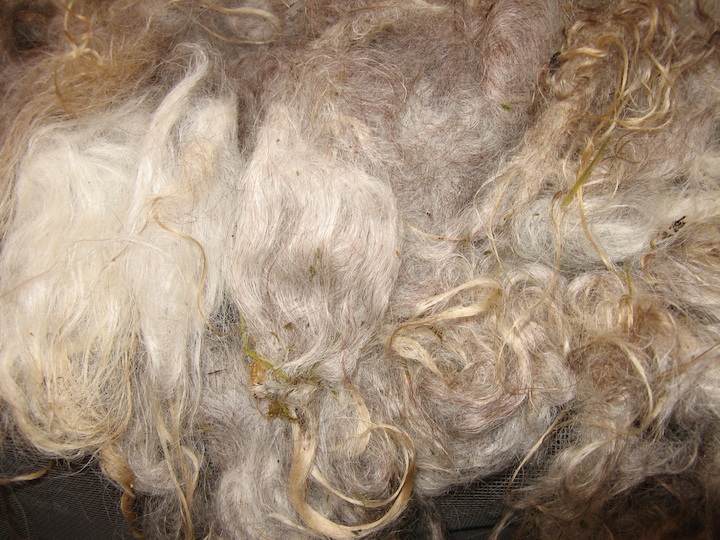
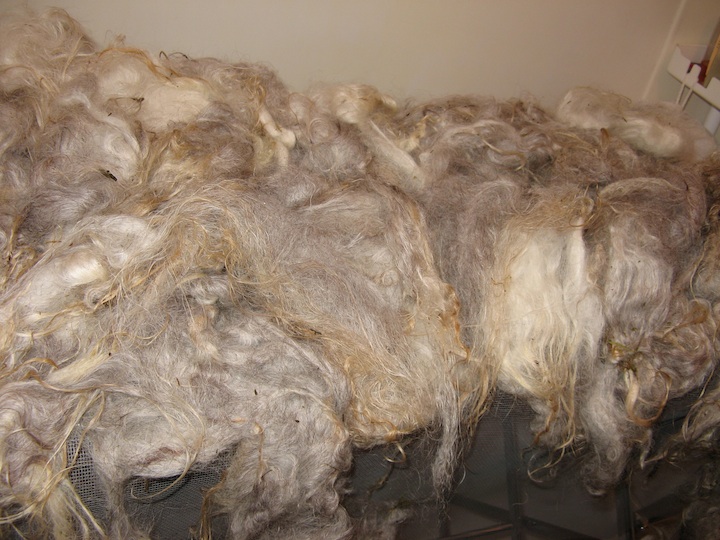
Washed the fleece of an Icelandic lamb named Frenchi, ancient breed, very odd fleece, looking forward to working with it to see how it behaves:


Taken off the bobbins:

Into a half-pound hank:
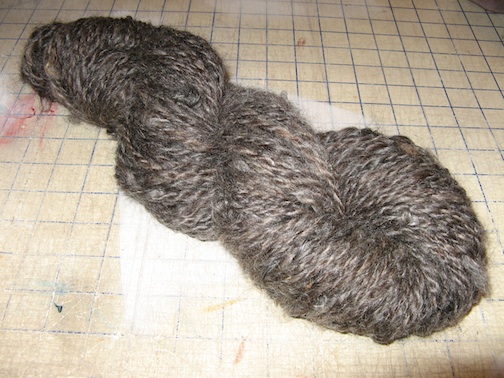
Close-up of mohair shininess:
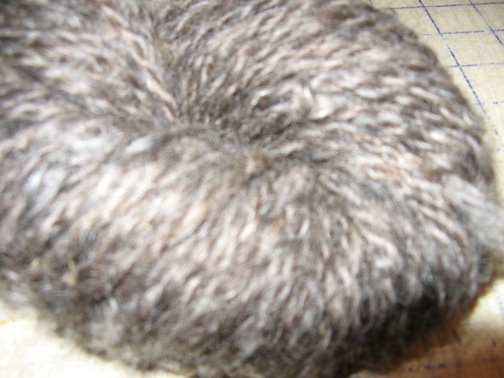
Observations: Not sure my drum carder has the right number of teeth in the cloth, as much of the mohair ends up on the licker-in drum if not covered by a thin layer of wool when entering the teeth. In the future may need to consider a finer cloth on the drum.
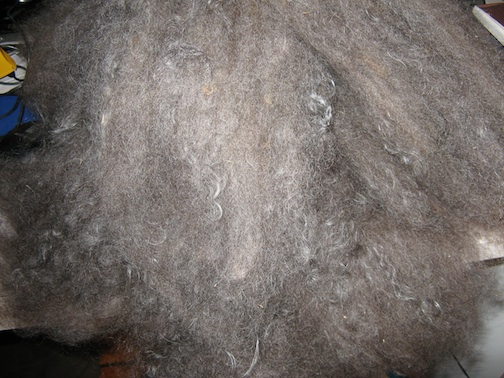
Observations: To properly mix the Willow the mohair goat with Bonnie, the Romney/Border Lesicester crosssheep, required 3 passes through the drum carder. After less-than-satisfying spinning, mixed/split the batts and recarded again – success. Approx. 40% mohair/60%long staple wool.
Ordered yak fur to spin, so yaks were on my mind:
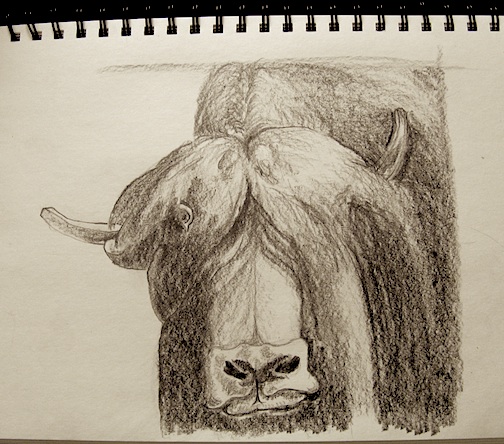
Observation: a drawing exercise recommended turning something you were working on 180 degrees, wherein I discovered my darks were inadequate.
First, eye straight on and sideways, putting all the outside forms around the globe of the eye

Second, sideways, slightly more fleshed out; pupil extends outward from eyeball

Third, locate in the skull
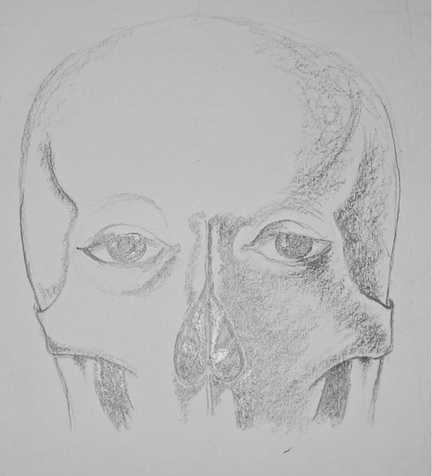
Observations: need to draw more and remember it is play.
Got a few rows done on the entrelac scarf; about 2/3 done.
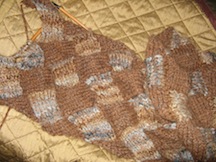
Close-Up of texture:
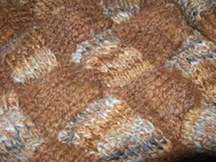
Composition:
Variegated squares: 2-ply, Handspun commercially-dyed Polwarth Combed Top; 2/3 Brown Suri Alpaca (no crimp) 1/9 Jenny (Border Leicester/Romney Cross) 2/9 Merino (local sheep, name unknown).
Brown squares: 50% Lydia the alpaca (huacaya presumed due to crimp) 50% Opal Border Leicester/Romney
Observations: Combed top is not as much fun to spin as something I prepared; commercially dyed top colors appeared different at home out of the package ( too much mixing was required to make the colors tolerable); suri alpaca requires an inordinate amount of mixing effort to be able to card; prefer to card and spin huacaya alpaca because it has some crimp; entrelac was difficult to learn but is quick and pleasant once it was figured out; entrelac is a good way to calm down variegated yarn; variegated yarn is too busy for my tastes.
First the test mittens made of commercial acrylic and cotton:
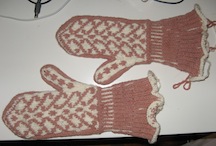
Second pair – given away before photographed.
Third pair: First mitten complete. Uses Natalie (light) and Opal (dark) Border Leicester/Romney Cross handspun.
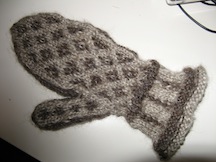
Started second mitten:
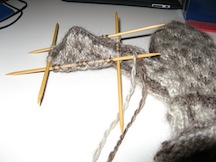
Observations:
Learned stranded/two-color knitting, which makes for a thick, warm mitten; need to learn to spin more consistently, especially between different animals (Opal spun up much thinner than Natalie even though the staple length and breed are the same); fuzzy handspun requires simpler and larger motifs, as details are lost.
First try at needle felting. Tried on a ratty old sweater kept for painting/studio. Pics in order: Before, After, Close-Up to show dimensionality.
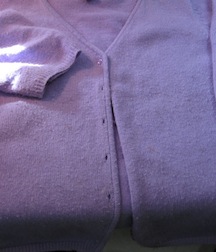
After:
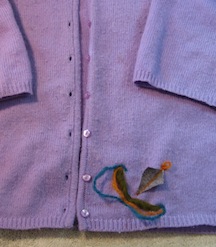
Close-Up to show dimensionality:
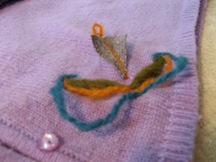
Observations: Fabric failed to felt, apparently has less wool content than I thought; sweater is 80% dead dinosaur/20% angora, but that is apparently enough, and the embellishments penetrated well; non-wool items can be felted down with an overlay of felt (orange yarn over grey fabric).
First try at wet felting. Felted over existing plastic eyeglass case. Used wool drum carder waste, wool handspun, and commercial wool yarn. Clear case is an additional case – before felting.
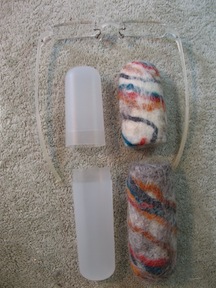
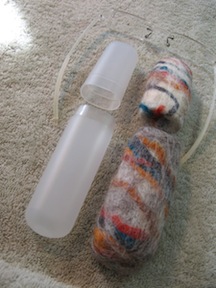
Observations: Prefer to wear rubber gloves; fibre must be separated if reached for wet (cannot go back in the bag); need to spend longer felting; use less soap; add soap to make up for rinsing during hot/cold shock stage.

Left to right, in order of fineness of preparation: 100% BFL/DrumCarder (wasteful); 50% BFL/50% Jenny Border Leicester/Romney Cross (loss of loft); 100% BFL/Hand Cards (difficult to card); 100% BFL/Combs – Best result, least loss.
Powered by WordPress